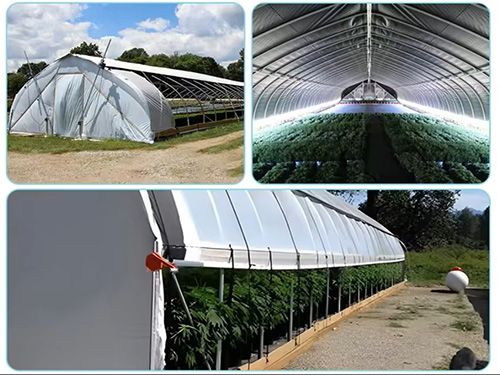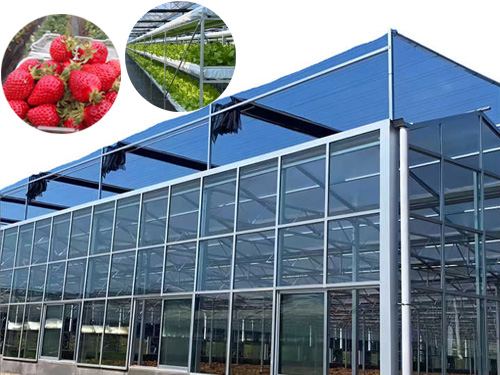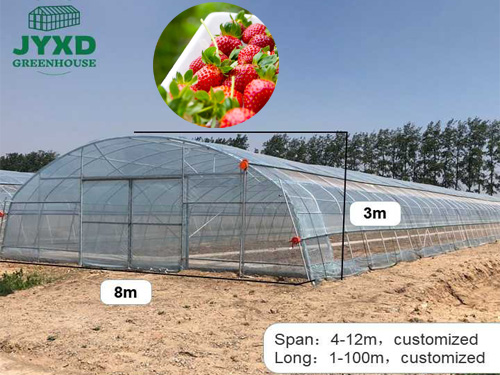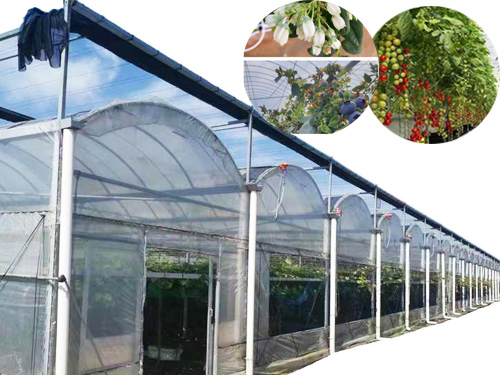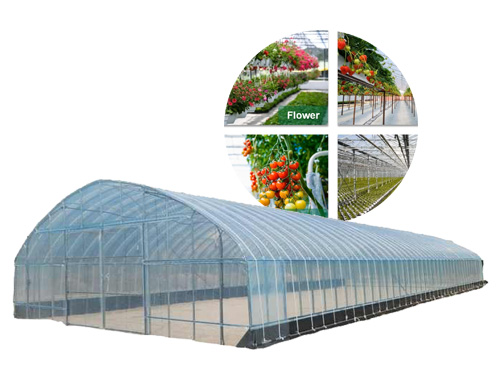NEWS DETAILS
NEWS INFORMATION
Climate Control Sensors in Greenhouses: Selection and Installation Guide
AUTHOR:jyxd-greenhouse DATE:2025-02-27 15:57:48 HITS:162
Maintaining the ideal climate inside a greenhouse is essential for healthy plant growth and high yields. Climate control sensors help monitor and regulate environmental factors such as temperature, humidity, CO₂ levels, and light intensity. Choosing the right sensors and installing them correctly ensures efficient greenhouse management. This guide covers how to select and install climate control sensors for optimal greenhouse performance.
1. Why Climate Control Sensors Are Essential for Greenhouses
Greenhouse crops thrive under stable environmental conditions. Climate control sensors help growers:
• Maintain optimal temperature and humidity levels
• Prevent plant stress caused by sudden climate changes
• Improve water and energy efficiency by automating ventilation and irrigation
• Detect potential issues early, reducing crop losses
By integrating sensors with an automated climate control system, growers can create a stable and productive greenhouse environment.
2. Key Types of Climate Control Sensors
There are various types of sensors used to monitor greenhouse conditions. Selecting the right sensors depends on the crops grown, climate conditions, and automation needs.
Temperature Sensors
• Measure air and soil temperature to prevent heat stress or cold damage.
• Essential for regulating heating and cooling systems.
• Common options: Digital thermometers, infrared sensors, and wireless temperature probes.
Humidity Sensors (Hygrometers)
• Monitor air moisture levels to prevent fungal diseases and dehydration.
• Work in conjunction with ventilation and misting systems.
• Common options: Capacitive and resistive humidity sensors.
CO₂ Sensors
• Measure carbon dioxide levels to optimize photosynthesis and plant growth.
• Help regulate CO₂ enrichment systems.
• Important for high-value crops like tomatoes and cucumbers.
Light Sensors (Photometers and PAR Sensors)
• Monitor natural and artificial light levels to ensure proper plant development.
• Used to control supplemental grow lights and shading systems.
• PAR (Photosynthetically Active Radiation) sensors measure light useful for photosynthesis.
Soil Moisture Sensors
• Detect soil water levels to prevent over- or under-watering.
• Essential for automated irrigation systems.
• Options include tensiometers and volumetric water content sensors.
Airflow and Wind Sensors
• Measure ventilation efficiency and detect wind speed inside the greenhouse.
• Help regulate fan systems and prevent heat buildup.
• Useful for greenhouses in extreme weather conditions.
3. How to Select the Right Climate Control Sensors
When choosing greenhouse sensors, consider the following factors:
Accuracy and Reliability
• Select sensors with high precision and durability to ensure reliable data collection.
• Choose industrial-grade models for long-term use in greenhouse conditions.
Compatibility with Automation Systems
• Ensure the sensors can integrate with existing greenhouse control systems.
• Wireless and IoT-enabled sensors allow remote monitoring via smartphones or computers.
Environmental Resistance
• Choose sensors resistant to moisture, dust, and temperature fluctuations.
• Waterproof and corrosion-resistant models are ideal for humid greenhouses.
Ease of Installation and Maintenance
• Opt for sensors that are easy to install and calibrate.
• Regular maintenance, such as cleaning and recalibration, ensures long-term performance.
4. Best Practices for Installing Greenhouse Sensors
Proper sensor placement is critical for accurate data collection and efficient climate control.
Temperature and Humidity Sensors:
• Place sensors at plant canopy level for precise readings.
• Avoid direct exposure to sunlight or heating sources.
• Use multiple sensors in large greenhouses to detect microclimates.
CO₂ Sensors:
• Install sensors at plant level where CO₂ uptake occurs.
• Place them away from ventilation openings to prevent false readings.
Light Sensors:
• Position sensors where they receive the same light intensity as the plants.
• Keep them clean and free from dust or shading obstructions.
Soil Moisture Sensors:
• Insert sensors at root depth for accurate moisture readings.
• Avoid placing them too close to irrigation emitters to prevent skewed results.
Airflow Sensors:
• Mount near ventilation systems to monitor airflow efficiency.
• Ensure they are not obstructed by greenhouse structures or equipment.
5. Integrating Sensors with Automated Climate Control Systems
For maximum efficiency, climate control sensors should be integrated into a centralized automation system. Benefits of automation include:
• Real-time monitoring and remote access via smart devices
• Automated adjustments to temperature, humidity, and CO₂ levels
• Data logging for long-term climate analysis and optimization
Popular greenhouse automation solutions include:
• Wireless sensor networks (WSN) for real-time climate tracking
• Smart controllers that adjust settings based on sensor feedback
• Cloud-based platforms for remote monitoring and alerts
Conclusion
Selecting and installing climate control sensors in greenhouses is essential for maintaining optimal growing conditions. By using accurate temperature, humidity, CO₂, light, and soil moisture sensors, growers can improve productivity and sustainability. Proper sensor placement and integration with automation systems ensure efficient climate management, leading to healthier crops and higher yields.
Would you like recommendations on specific greenhouse sensor brands or automation systems?
Hebei Juyou Xinda Greenhouse Facilities Co.,Ltd.
Copyright © 2024-2025 https://www.jyxd-greenhouse.com. All Rights Reserved Hebei Juyou Xinda Greenhouse Facilities Co.,Ltd.Copyright





 Current Location:
Current Location:


